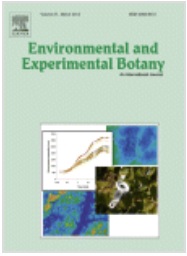Water status and diffusion transport were studied in the roots of yellow lupine (Lupinus luteus L., cv. Juno) treated for 48 h with two selected concentrations of Pb(NO3)2: 150 mg l−1, which inhibited root growth by about 50% (medium stress intensity), as well as 350 mg l−1, which almost entirely suppressed root elongation (severe stress intensity). Relative water content (RWC), which characterizes the degree of root water saturation, slightly increased at the lower lead concentration and remained unchanged at the higher lead dose. Ultrastructure analyses under a transmission electron microscope revealed that plasmolysis was not evoked by lead in the apical part of the meristem. Moreover, direct observation of meristem cells using Nomarsky optics indicated enhanced vacuolization in the presence of both lead concentrations. These data suggest that the water status of the roots was not affected by the metal. Due to the fact that proline is involved in the maintenance of turgor in the cells, the metabolism of this amino acid was investigated. In the roots, the activity of enzymes involved in proline synthesis, such as pyrroline-5-carboxylate synthetase (P5CS) and ornithine aminotransferase (OAT), increased at 150 mg l−1 Pb2+; nevertheless, proline content was diminished at the lower lead concentration. This effect is likely the result of proline degradation by proline dehydrogenase (PDH), since the activity of this enzyme increased at the lower lead dose. On the other hand, in the presence of 350 mg l−1 Pb2+, a low level of proline was correlated with a decrease in the activity of P5CS and OAT, as well as unchanged PDH activity in lupine roots. These data may imply that enzymatic synthesis of proline was strongly damaged by the metal ions. The low level of proline in both experimental variants suggests that proline accumulation is inessential to maintaining the osmotic uptake of water into root cells. NMR spectroscopy showed that exposition of lupine seedlings to lead caused a deceleration in water transport in the roots due to a reduction in the water transfer rate across the membranes (transmembrane transfer) and vacuoles continuum, as well as water diffusion along the root apoplast. Fluorescence staining and immunogold labeling showed the presence of callose strands in cell walls and/or in the vicinity of them. In lead-treated lupine roots, callose was mainly localized in the parenchyma cortex placed lengthwise to the vascular cylinder. Callose deposits in the cell walls may reduce vacuolar transport, as well as increase cell wall resistance to water flow. Deceleration of diffusional water movement to the vascular system, may in turn, influence the rate of long-distance water transport to aerial parts of the plant.

